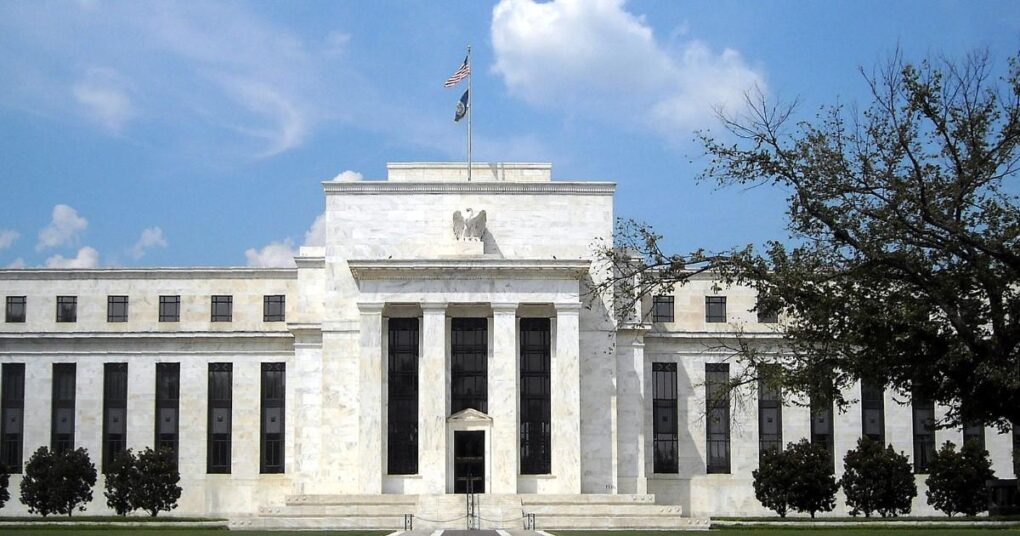
The Federal Reserve has actually formally reported a loss of $57 billion for the very first six months of 2023. Rather a number! So the “Federal Reserve Banks Combined Quarterly Financial Report as of June 30, 2023” (CQFR)– a little-known file– is particularly noteworthy for its red ink. We can prepare for an annual loss of over $100 billion for 2023 and for the losses to continue into 2024.
How does a reserve bank, specifically the world’s greatest and crucial reserve bank, lose 10s of billions of dollars in six months? An average individual, influenced by the mystique of the Fed, might naturally be baffled by this fact.
To comprehend what is happening, we require to remember that in addition to being a media star as the manipulator of the world’s dominant currency, the Federal Reserve is a bank– well, actually 12 Federal Reserve Banks (FRBs), covering districts throughout the United States. Added together they are big, with total properties of $8.3 trillion (with a T). The FRBs have loans, financial investments, deposits and borrowings, interest income and interest expense, and revenue or loss like other banks do. They likewise have personal shareholders: the commercial banks which are “Fed member banks,” and the FRBs have more than them the Washington Federal Reserve Board, which charges them for its expenses.
The combined FRBs are planned to constantly pay since of their unique monopoly in issuing U.S. dollar paper currency. This is a really profitable opportunity which indicates together they have $2.3 trillion of zero interest cost funding from the dollar bills distributing around the country and the world, which they can purchase interest making possessions. (They print up some money and use it to buy Treasury bonds, simply stated.) However instead of making profits, as the combined Fed reliably provided for more than 100 years, it is now making huge losses, a historic turnaround.
The CQFR shows that in the very first six months of 2023 the combined Fed had $88 billion in interest income, however $141 billion in interest expenditure. So it paid out in interest $53 billion more than it got, and likewise had to pay its overhead expenditures of over $4 billion.
Why does not it have more interest earnings? Due to the fact that the Fed engaged to the tune of about $5 trillion in one of the most traditional of financial risks: borrowing brief and loaning long, and now rates of interest have gone really far against it and the threat has actually turned into real losses.
The CQFR reveals on page 22 that on June 30 the combined Fed owned $5.5 trillion in Treasury Securities with a typical yield of 1.96%, and $2.6 trillion of mortgage-backed securities yielding on average 2.20%. In other words, it invested in massive amounts of really long-term fixed rate properties and secured for many years a traditionally low yield of about 2%. Meanwhile, it was funding $5 trillion of these properties with floating rate deposits from banks and loanings in the kind of repurchase contracts, the expense of which increased to over 5%.
You do not require a degree in banking or a Ph.D. in economics to understand that lending cash at 2% while you are borrowing money at 5% is a losing proposal. That is what our Federal Reserve Banks did and continue to do.
On top of this, as divulged in the footnotes of the CQFR on page 7, when the combined Fed’s investments were marked to market on June 30, they had a market price loss of over $1 trillion, or a market value loss of 23 times the Fed’s stated capital.
The CQFR reports a total capital of about $42 billion ($35.6 billion of paid-in capital from the member industrial banks and $6.8 billion of retained revenues, called “surplus”). However note: This total capital is much less than the $57 billion reported loss for the six months of 2023, to which need to be added the loss for the later months of 2022 of $17 billion. This total $74 billion of collected losses by June 30 must be deducted from the kept profits and hence from overall capital. However the Fed does refrain from doing this– it misleadingly books its losses as a property (!), which it calls a “deferred property”– a practice extremely unexpected to anybody who passed Accounting 101. Why does the Fed do this? Probably it does not wish to reveal itself with negative capital. However, negative capital is the reality.
Here are the combined Fed’s correct capital accounts since June 30, based on Typically Accepted Accounting Principles. They result in a capital of unfavorable $32 billion:
Paid-in capital $36 billion
Kept revenues ($68 billion)
Total capital ( $ 32 billion )
The Fed wants you to believe that neither its negative capital nor its huge losses matter because it is the Fed and can print money. Numerous financial experts agree.
However does it matter that the Fed’s losses will cost not only it, however likewise the Treasury and the taxpayers, over $100 billion this year and more in the future? Does it matter that on a combined basis its built up losses are higher than its private shareholders’ paid-in capital? Does it matter that with negative equity under standard accounting, it is technically insolvent? All of these can be debated, but the numbers certainly do get one’s attention.
We conclude with a basic question: Did the leaders of the Fed intend to lose $57 billion in 6 months? Did they mean to be looking at a loss of more than $100 billion for this year? Did they mean to have a mark to market loss of more than $1 trillion? It is difficult to believe they did. The liberal supply of red ink they have provided definitely does not assist the Fed’s track record for understanding what it is doing.

